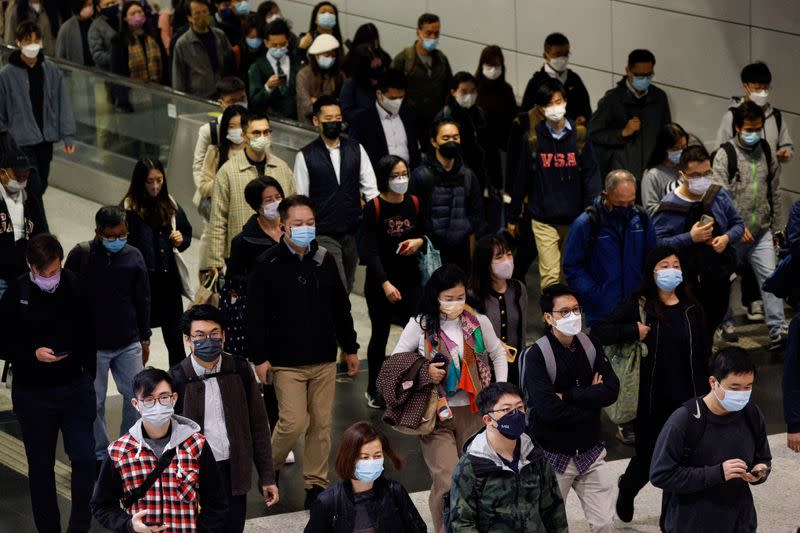Hong Kong's population climbs to 7.5 million, near 2019 level
HONG KONG (Reuters) - Hong Kong's population rose 2.1% from the middle of last year to June this year, provisional government figures showed on Tuesday, marking the first significant uptick since a downward trend began in 2020 due to stringent COVID-19 measures.
The number of people living in the city increased by 152,000 in the period, pushing the special Chinese administrative region's population to 7,498,100 at mid-2023.
It was the highest figure since 2019 when the city's mid- year population hit 7,507,900.
The government attributed the rise to the relaxation of COVID measures since the second half of 2022 and the resumption of normal travel between Hong Kong, the Chinese mainland and the rest of the world.
"Many Hong Kong residents who stayed abroad during the epidemic have returned to Hong Kong, while some mainland and overseas persons have also been admitted to Hong Kong through various schemes," the government said.
Hong Kong had its borders effectively sealed since 2020, isolating it from the world due to rules such as up to three weeks quarantine, measures imposed in pursuit of China's zero-COVID policy.
The former British colony started easing policies in late 2022 and authorities are trying to restore business confidence and investor allure after more than three years of severe COVID-19 measures.
Hong Kong's population is expected to reach 8.19 million in mid-2046, the government said, adding that it has launched various talent attraction and labour importation schemes to help drive future population growth in the next two decades.
The city's fertility rate is expected to remain low while population aging is expected to continue.
"The number of elderly persons aged 65 and over is projected to nearly double over the 25-year period", the government said, with one in every three Hong Kong people classified as elderly by 2046.
(Reporting by Farah Master, editing by Ed Osmond)


